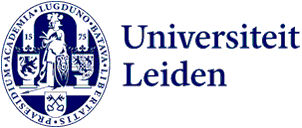
Maternal mortality in the Netherlands halved in recent years
The number of women in the Netherlands dying before, during or after childbirth has halved in recent years. This was discovered by Athanasios Kallianidis, who is training as a gynaecologist, during his PhD research at the LUMC. He also found that a caesarean section has a higher risk of death than a vaginal delivery.

Between 2006 and 2018, 171 women in the Netherlands died during pregnancy, childbirth and up to a year after giving birth. Compared to the 13 years before, the death rate has halved. The most striking difference is that the leading cause of death is cardiovascular disease (19%) whereas this had always been pre-eclampsia. The number of pre-eclampsia deaths fell from 30% to 12%.
Risk still very low
Another important finding was that the delivery method also affects the mortality rate. Women who had a caesarean section were three times more likely to die than those who had a vaginal delivery. And one in ten deaths after a caesarean section were the direct result of the operation. But there is good news too. The absolute risk of death after a caesarean section is still very low, at 13 women per 100,000 caesarean sections, and has fallen sharply since the 1990s.
Multiple risk factors
Risk groups for maternal mortality are teenagers, older women and women of Surinamese or Antillean descent. This is probably due to intersectionality, which means that multiple risk factors are present at the same time, such as poverty, a language barrier, health problems and/or unplanned pregnancy. ‘In future we hope to find out why these women still lose out, despite us having known for some time that they are at higher risk,’ says Kallianidis.
For the study Kallianidis used data collected by the Maternal Death and Morbidity Audit Committee. This tracks every death of a woman during pregnancy and up to one year after childbirth.
Hysterectomy after caesarean section
Besides understanding the frequency of maternal deaths, Kallianidis’s goal was to improve the care provided. ‘We looked specifically at hysterectomies. This is a last resort in the event of very severe blood loss or severe infections during childbirth,’ he says. He compared the results from the Netherlands with those from nine other European countries. ‘We saw that the uterus was removed more often in countries with a higher percentage of caesarean sections. The study’s results emphasise how the short-term risks and complications of a caesarean section should not be underestimated, especially as we know that the number of caesarean sections has been increasing rapidly for years,’ says Kallianides.
Improved care
Kallianides also saw how women are increasingly dying of conditions that are not pregnancy related, such as cardiovascular disease. These conditions develop or worsen during pregnancy. ‘That makes it incredibly important for all healthcare providers to recognise and treat them in good time by working together. The GP, the midwife and the hospital specialists all have their own roles but ultimately they are a team.’
Kallianidis hopes that his results will help reduce maternal mortality even more in the future. ‘More knowledge about the causes of maternal mortality is crucial to improving the care for pregnant women.’
